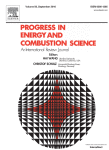 Authors: Giulia BOZZANO, Flavio MANENTI
Authors: Giulia BOZZANO, Flavio MANENTI
Affiliation: Politecnico di Milano, Dipartimento di Chimica, Materiali e Ingegneria Chimica “Giulio Natta”, Centre for Sustainable Process Engineering Research (SuPER), Piazza Leonardo da Vinci, 32, 20133 Milano, Italy
Reference: Bozzano, G., Manenti, F., 2016. Efficient methanol synthesis: Perspectives, technologies and optimization strategies, Progress in Energy and Combustion Science 56, 71–105 (2016).
Abstract: “In economy nowadays, methanol is already a key compound widely employed as building block for producing intermediates or synthetic hydrocarbons, solvent, energy storage medium, and fuel. This status is expected to last in the near future or even improve to the point of making this compound a central participant in the worldwide economic landscape. For these reasons, every improvement to its production process, in terms of energy savings, optimization, etc., has potential to promote relevant economic benefits. Methanol production comprises three main steps: preparation of syngas, methanol synthesis and downstream separation. This paper aims at reviewing technologies and procedures for modeling and optimizing the second aforementioned phase: the synthesis reactor. Specifically, we focus on packed-bed units, which represent the most widespread technology. In the manuscript, we are going to describe and compare both steady-state and dynamic reactor models as well as analyze typical assumptions and implementation schemes…”
DOI: 10.1016/j.pecs.2016.06.001
Comments: in their section on reactor modeling, and more specifically in section 4.4 dedicated to steady-state models, the authors make the point that methanol synthesis processes have been simulated using commercial process simulators (Aspen Plus, Aspen Hysys, PRO/II are specifically mentioned), They highlight that using such commercial process simulators lead to modelling of “the methanol synthesis reactor by means of predefined models and the unit of choice is usually the Gibbs reactor”. They further state that “Only few articles mention the possibility of integrating”external, more detailed, models into such commercial suites (i.e.using CAPE-OPEN directives)” and there they cite academic research work in which Dr Ismael DIAZ used the MATLAB CAPE-OPEN Unit Operation to include the reactor model in a commercial process simulator.
